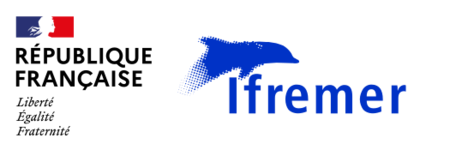No traces of SARS-CoV-2 detected in the first samples of sea water and shellfish analyzed
In mid-April, Ifremer began an operation to collect samples of wastewater, seawater and shellfish in order to check whether traces of the SARS-CoV-2 virus, responsible for the Covid-19 pandemic, were present. Along with his team, virologist and manager of Ifremer’s Environmental Health and Microbiology (LSEM) laboratory in Nantes, Soizick Le Guyader, relied on the institute’s network of Environment – Resources (LER) laboratories to take samples and dispatch them to Nantes. The team also refined its research protocol for SARS-CoV-2 in order to ensure the analyses’ reliability. This PCR protocol is similar to that used for human screening and allows for viral genome to be detected in samples.
Wastewater: Ifremer focuses its research on 3 water treatment plants from 2 geographic areas
Wastewater, a repository of human waste, is a reflection of microorganisms present in the human population. In France, analyses of wastewater from regions severely impacted by the Covid-19 epidemic such as the Paris and Grand Est regions, showed the presence of the SARS-CoV-2 genome, with quantities correlated with the number of people hospitalized (Wurtzer et al.).
In order to find out if traces of SARS-CoV-2 were present in wastewater from other regions, the LSEM implemented a sampling plan at three wastewater treatment plants in the Grand-Ouest region: two from an urban area and another from a coastal area. According to the plants, the sampling took place between March 16 and May 12, 2020. This study is backed by the European H2020 VEO (Versatile Emerging infectious disease Observatory).
A total of 13 samples of one liter of untreated water were collected at the inlet of the 3 treatment plants. Analyses are underway and preliminary results are expected soon.
21 shellfish samples from the 3 French coastlines analyzed
Ifremer defined a shellfish sampling strategy in order to obtain balanced national coverage of mainland coastline. The sampling sites were selected according to their exposure to sources of human fecal contamination: 3 sites along the Normandy coast, 8 along the Breton coast, 8 along the Atlantic coast, and 3 along the Mediterranean coast.
The robustness of this sampling strategy is due, on one hand, to the accumulated experience within the framework of the microbiological monitoring network REMI, which is operated by Ifremer on behalf of the Ministry of Agriculture and Food; and, on the other hand, to the expertise acquired in support of the Water Agencies working to preserve the quality of marine waters in line with the watershed.
2 mussel samples and 19 oyster samples were taken between April 22 and April 27, 2020.
In order to verify the effectiveness of the analytical method used (ISO/CEN), a "control sample" was carried out in the laboratory by adding a porcine coronavirus to the tissue of a non-contaminated oyster. Like the others, this "control sample" went through all the stages of the protocol and confirmed that it is possible to detect the coronavirus using this technique.
Among the 21 shellfish samples analyzed:
- 6 showed traces of norovirus indicating contamination by human waste.
- No shellfish sample showed traces of SARS-CoV-2.
4 seawater samples from the 3 coastlines analyzed
Four samples of a liter of marine water potentially exposed to human waste were taken in areas identified thanks to the network of observatories for integrated research in environmental microbiology (ROME).
- None of the seawater samples showed traces of SARS-CoV-2.
Continuation of sampling and analyses
“Although this does not provide certainty for all shellfish and mainland marine waters, the absence of traces of SARS-CoV-2 revealed by our study is good news", highlights Soizick Le Guyader. “Proving the real absence of the virus is tricky. We did not take samples from all the coastal areas susceptible to contamination by human waste. Furthermore, of the 7 to 9 grams of shell tissue collected, we only analyzed a small part.
We have therefore decided to continue our sampling and analyses on the same sites every two weeks for another several months in order to monitor the possible effects of a potential increased circulation of the virus among the population as lockdown measures are gradually lifted."
